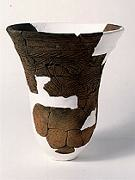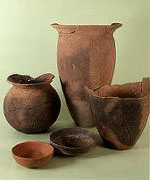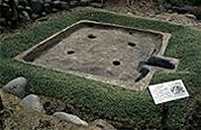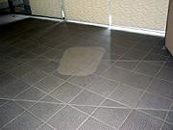The Jomon and Yayoi Era
There are Ikedayamakita Ruin in Higashigotanda Roku-chome and Kirigaya Ruin in Nisigotanda during the earlier and the early Jomon Eras. Two ruins are the oldest people’s lives. In the early Jomon Era, there were some communities along the Meguro River such as Irukibashi Ruin. Shell mounds and traces of dwelling sites were excavated from there. Omori Shell Mound exited during the late and the last Jomon Eras. In the late of the Yayoi Era, there was a large moat settlement (a village surrounded by a moat) in Ikedayamakita Ruin on the left side of the Meguro River.




